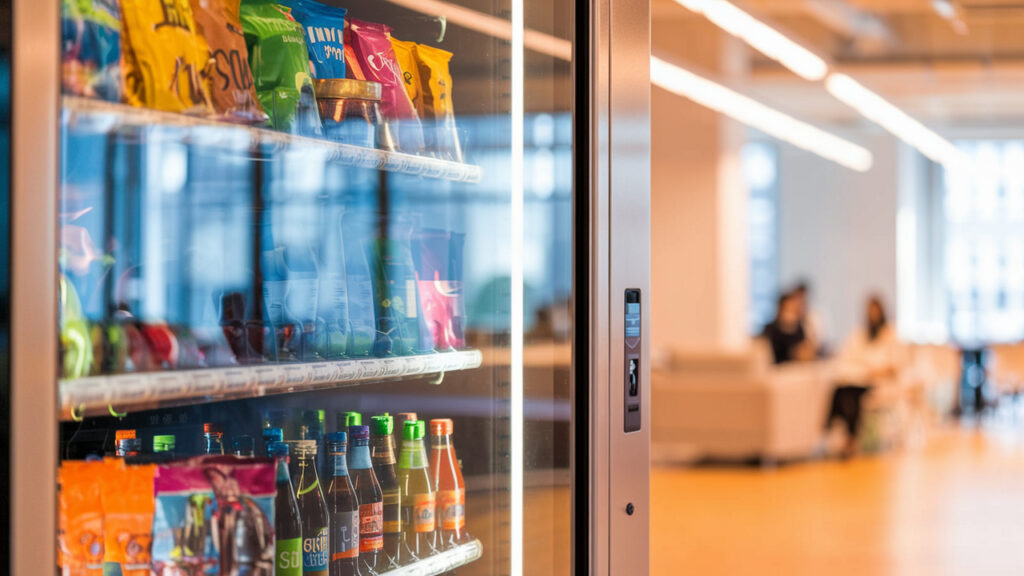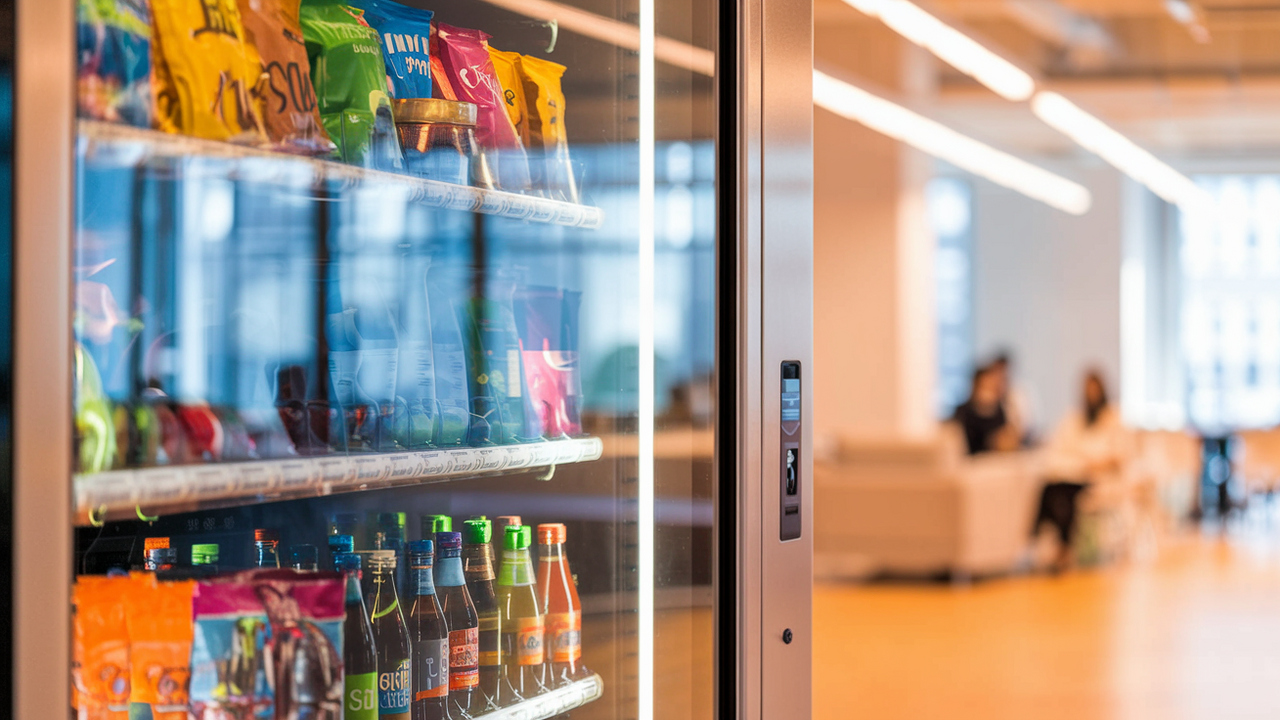Vending Machine Business Plan Template: How to Get Started
Want to start a vending machine business but don’t know how? Use this step-by-step business plan template to launch smart, avoid mistakes, and make passive income from day one.
When I started my vending machine business, I didn’t have a roadmap. I made a few mistakes, wasted money on bad machines, and learned a lot through trial and error. That’s why I created this vending machine business plan template—to help beginners like you start strong and build a profitable route the right way.
Below, I’ll walk you through everything I wish I had when I got started: your vision, startup costs, location strategies, machine options, product planning, and more.

Table of Contents
Why You Need a Vending Machine Business Plan
Before you buy your first machine, you need a clear vending business plan. Trust me, winging it is expensive. A written plan helps you:
- Set realistic financial goals
- Understand your startup costs
- Identify the best locations
- Choose the right machines and products
- Track your growth and ROI
Let’s build your plan step by step.
1. Define Your Business Goals
Ask yourself: What do I want from this vending business?
- A side hustle that earns $500–$1,000/month?
- A scalable business with 10+ machines?
- Something I can manage while working full-time?
Setting your goals upfront will shape how you invest and operate.
2. Set Your Startup Budget
Here’s a basic breakdown of what you might spend:
| Item | Estimated Cost |
|---|---|
| Used combo vending machine | $2,000–$3,500 |
| Card reader & software setup | $300–$500 |
| Initial product inventory | $300–$600 |
| Business license & insurance | $100–$500 |
| Marketing materials (flyers, biz cards) | $50–$100 |
You can start with less than $5,000 and scale from there.
3. Choose Your Business Name and Legal Structure
You’ll need a name, domain, and legal setup. I registered mine as an LLC, which protects your personal assets. You can also use a sole proprietorship if you’re just testing things out.
Make sure to check for domain availability and register with your state and IRS if needed.
4. Identify Your Ideal Locations
Your machines are only as good as the traffic around them. Some of my most profitable locations have been:
- Auto repair shops
- Small offices or co-working spaces
- Apartment complexes
- Gyms and wellness centers
- Community centers
Look for places with consistent foot traffic, limited snack options, and decision-makers open to your pitch. If you’re on a budget, aim for free vending machine locations first (check my other post for that strategy).
5. Choose the Right Machine
I recommend starting with a combo vending machine that offers both snacks and drinks. Make sure it’s:
- Compact enough to fit small spaces
- Compatible with credit card readers
- Reliable with low maintenance needs
➡️ View top-rated vending machines on Amazon
You can go used to save money, but always inspect photos and ask about condition.
6. Plan Your Snack and Drink Inventory
What you stock depends on your location. Here’s my go-to plan:
High-traffic areas (gyms, laundromats):
- Energy drinks
- Water
- Protein bars
- Popcorn and jerky
Offices or breakrooms:
- Chips and granola bars
- Candy bars
- Coffee drinks
- Gum and mints
➡️ Best bulk snack packs for vending machines on Amazon
Stick to individually wrapped, name-brand snacks that fit in standard vending slots.
7. Set Prices and Profit Margins
Aim for a 100–120% markup on each item. For example:
- Chips you buy for $0.60 = $1.25 vend price
- Drinks you buy for $0.85 = $1.75 vend price
Keep an eye on what sells and adjust pricing if needed. Don’t underprice just to move product.
8. Track Your Sales and Performance
You need to monitor:
- Which products sell fastest
- How often to restock
- Which locations make the most profit
Use vending management apps or a simple spreadsheet. Keeping track helps you grow smarter.
9. Reinvest Into More Machines
Once your first machine is profitable, reinvest into a second machine. I always recommend building one machine at a time rather than overextending too quickly.
Scaling slowly means you stay profitable and avoid burnout or cash flow issues.
10. Build Relationships, Not Just Routes
The key to success is people. Stay in touch with business owners, clean and restock on time, and offer upgrades when needed. When you provide value, they’ll help you grow.
Final Thoughts
Starting a vending machine business is one of the most accessible, low-risk ways to build a stream of passive income. But having a clear business plan is what separates the pros from those who quit after one machine.
I used this exact template to build my vending route from scratch. If you follow this structure, make smart decisions, and focus on quality service—you’ll build a business you can scale and rely on.
One of the most important things I realized early on is that this business thrives on simplicity and systems. The less complicated you make your operations, the easier it becomes to scale. That’s why having a clear vending machine business plan is so critical—it’s your blueprint for long-term consistency.
If you’re wondering whether to buy used or new machines, let me be honest: I started with used vending machines from a local seller and had no problems. But I made sure they were refurbished, clean, and compatible with cashless payment systems, which made them feel brand new to the locations I served.
In my experience, offering credit card and mobile payment options boosts sales significantly. People don’t carry cash like they used to. I saw a 30% increase in purchases after adding card readers. So when you’re building your vending business plan, make sure your machines are tech-friendly and ready for today’s customers.
One mistake to avoid is placing machines without a contract. Even if it’s a free placement, I always create a simple agreement with the business owner. It lays out responsibilities, keeps everything professional, and prevents unexpected removals or misunderstandings later on.
I also track monthly vending income and expenses for every location. Your plan should include a section where you review performance every 30 days. Knowing your best and worst-performing machines helps you make data-driven decisions about where to expand—or where to pull out.
If you’re aiming to scale, think of your vending machine route like real estate. Every location is an income-producing asset. The more machines you place smartly, the more cash flow you generate monthly. It’s why this business can turn into a true passive income stream if managed right.
Another thing to include in your plan is how you’ll handle product restocking and inventory tracking. I use simple systems like Google Sheets and barcode scanners, but there are also vending software tools available. You want to avoid running out of your top-selling items, especially in high-traffic spots.
When choosing snack packs, always consider portion size. Some products are great but don’t physically fit in the vending slots. I’ve found that Amazon bulk snack packs with individually wrapped items are reliable, cost-effective, and vending-friendly.
Your business plan should also map out how you’ll get new vending locations. I built my first route by pitching small businesses with foot traffic and no snack options. Offering a zero-cost service with maintenance included made the deal a no-brainer for them. That sales strategy is worth including in your plan.
Marketing is often overlooked in vending, but it matters. I created a basic website with my business name, a contact form, and a few photos of my machines. It’s helped me land multiple free placements and makes me look legit. So yes—add basic digital marketing to your vending business strategy.
Customer satisfaction matters too. I keep my machines clean, fix jams quickly, and check expiration dates regularly. That effort builds trust with location owners and boosts your chances of referrals. I’ve had several owners recommend me to others because I take care of my machines better than the last vendor.
Finally, your vending business plan should include a long-term growth strategy. Are you looking to manage this solo, or will you eventually hire help? I built mine to be self-run, but once I hit 7+ machines, I considered hiring a part-time restocker. Planning ahead for growth saves you from being overwhelmed later.

